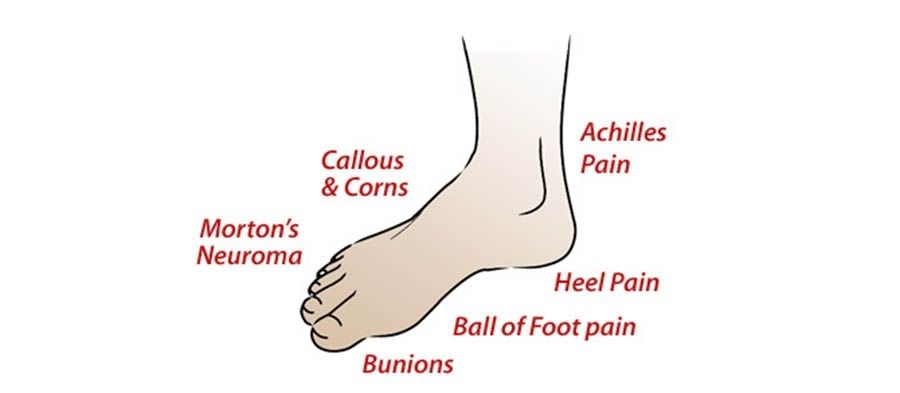Dry skin can cause itching and burning feet. Use mild soap in small amounts and a moisturizing cream or lotion on your legs and feet every day. Be careful about adding oils to bath water since they can make your feet and bathtub very slippery.
Corns and calluses are caused by friction and pressure when the bony parts of your feet rub against your shoes. If you have corns or calluses, see your doctor. Sometimes wearing shoes that fit better or using special pads solves the problem. Treating corns and calluses yourself may be harmful, especially if you have diabetes or poor circulation. Over-the-counter medicines contain acids that destroy the tissue but do not treat the cause. Sometimes these medicines reduce the need for surgery, but check with your doctor before using them.
Warts are skin growths caused by viruses. They are sometimes painful and, if untreated, may spread. Since over-the-counter preparations rarely cure warts, see your doctor. A doctor can apply medicines, burn or freeze the wart off, or take the wart off with surgery.
Bunions develop when the joints in your big toe no longer fit together as they should and become swollen and tender. Bunions tend to run in families. If a bunion is not severe, wearing shoes cut wide at the instep and toes, taping the foot, or wearing pads that cushion the bunion may help the pain. Other treatments include physical therapy and wearing orthotic devices or shoe inserts. A doctor can also prescribe anti-inflammatory drugs and cortisone injections for pain. Sometimes surgery is needed to relieve the pressure and repair the toe joint.
Ingrown toenails occur when a piece of the nail breaks the skin - which can happen if you don't cut your nails properly. Ingrown toenails are very common in the large toes. A doctor can remove the part of the nail that is cutting into the skin. This allows the area to heal. Ingrown toenails can often be avoided by cutting the toenail straight across and level with the top of the toe.
Hammertoe is caused by a shortening of the tendons that control toe movements. The toe knuckle is usually enlarged, drawing the toe back. Over time, the joint enlarges and stiffens as it rubs against shoes. Your balance may be affected. Wearing shoes and stockings with plenty of toe room is a treatment for hammertoe. In very serious cases, surgery may be needed.
Spurs are calcium growths that develop on bones of your feet. They are caused by muscle strain in the feet. Standing for long periods of time, wearing badly fitting shoes, or being overweight can make spurs worse. Sometimes spurs are completely painless - at other times they can be very painful. Treatments for spurs include using foot supports, heel pads, and heel cups. Sometimes surgery is needed.

